Overcoming Problems with Small Narrow Gardens — Tips and Tricks to Maximize and Create the Illusion of Space
When exiled to an existence of urban living, where concrete and glass often overshadow greenery, the small narrow garden emerges as both a challenge and an opportunity. These slender slices of outdoor space, tucked between buildings or lining the sides of townhouses, beckon the imaginative gardener to redefine what’s possible within confined dimensions.
The Art of Transforming Small Narrow Gardens
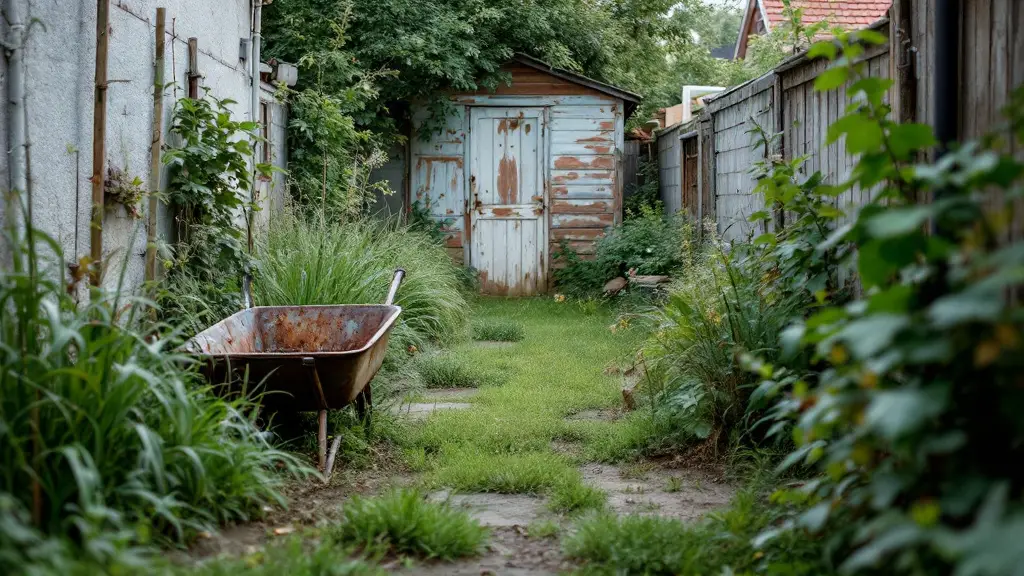
Understanding Your Space
Before the first seed is sown or the initial sketch is drawn, it’s imperative to truly understand the canvas you’re working with. Small narrow gardens come with their own set of quirks—limited width, elongated layouts, and often, a scarcity of natural light due to towering adjacent structures.
Spatial Constraints
These gardens might feel more like corridors than open spaces. The limited ground area necessitates a strategic approach to every square foot, ensuring that functionality and aesthetics coexist without overcrowding.
Perception of Clutter
In a confined area, even a few misplaced items can make the space feel chaotic. The key lies in creating a harmonious environment where each element has purpose and place, contributing to an overall sense of cohesion.
Light and Airflow Challenges
Surrounded by walls or fences, these gardens may struggle with shadows cast by neighboring buildings. This can affect plant selection and placement, as well as the overall ambiance of the garden.
Crafting a Vision: Planning and Design Strategies
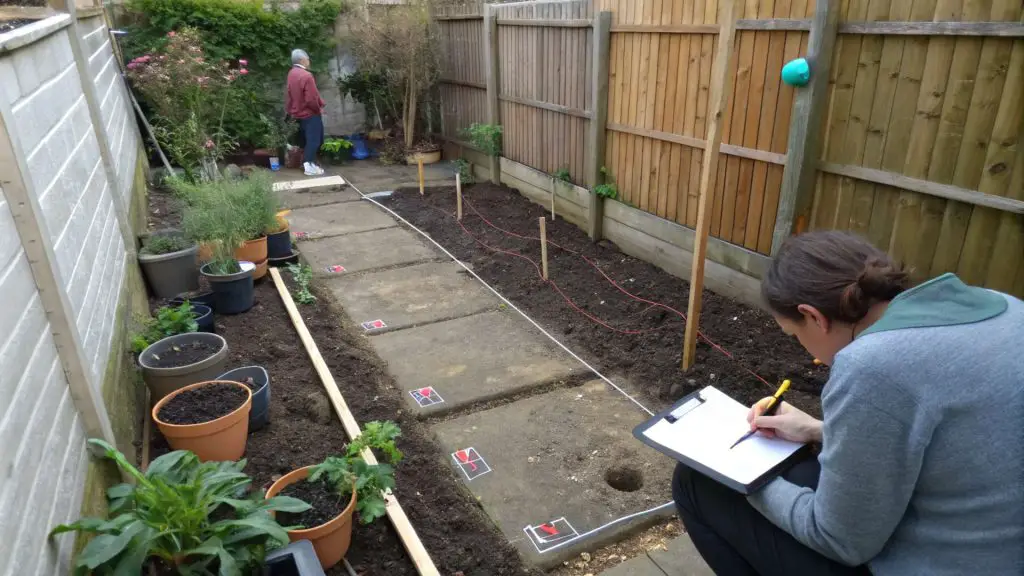
With an understanding of the space’s limitations and possibilities, the next step is to craft a vision that maximizes its potential.
Assessing and Measuring
Start by meticulously measuring your garden. Note the dimensions, the orientation (which direction it faces), and any existing features or obstacles. This will inform decisions about plant selection, furniture placement, and lighting.
Defining Objectives
What do you envision for your garden? Is it a serene retreat for morning coffee, a vibrant space for entertaining a few guests, or perhaps a lush haven for cultivating favorite plants? Defining clear objectives helps in making choices that align with your desired outcome.
Creating a Scaled Layout
Draft a scaled plan of your garden. This visual representation allows you to experiment with different configurations, ensuring that each element fits comfortably without overwhelming the space.
Vertical Gardening: Reaching New Heights
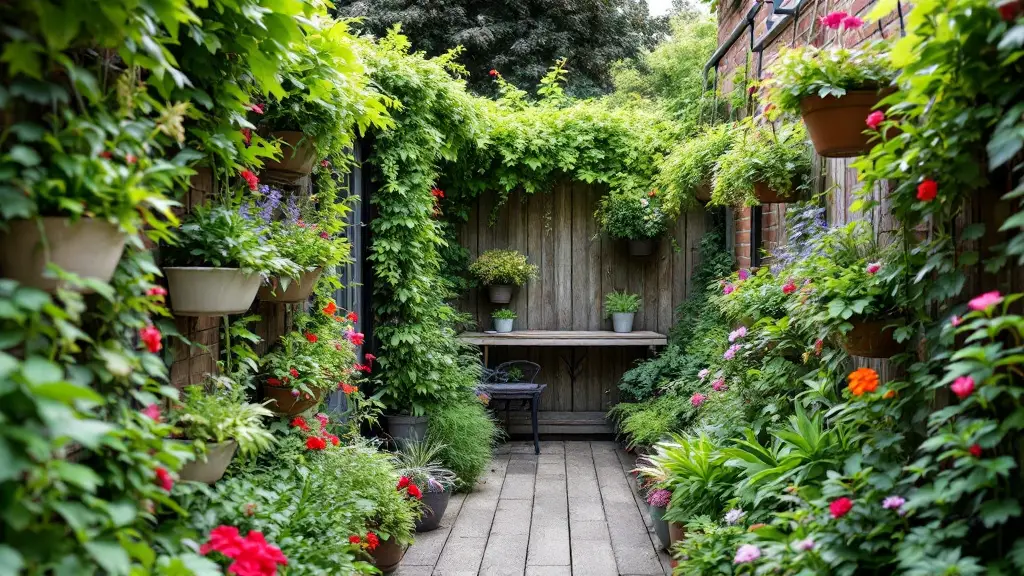
When ground space is at a premium, thinking vertically can unlock a wealth of possibilities.
Utilizing Walls and Fences
Transform bare walls and fences into living tapestries. Climbing plants like jasmine, clematis, or honeysuckle not only add greenery but can also infuse the garden with enchanting fragrances.
Installing Vertical Planters and Trellises
Vertical planters come in various designs—from pocket systems to modular units—that can host a variety of herbs, flowers, or succulents. Trellises provide support for vines and can act as natural screens for privacy.
Embracing Hanging Gardens
Hanging baskets and planters suspended from overhead structures introduce layers of foliage at different heights, adding depth and visual interest without consuming valuable floor space.
Smart Furniture Choices: Functionality Meets Style
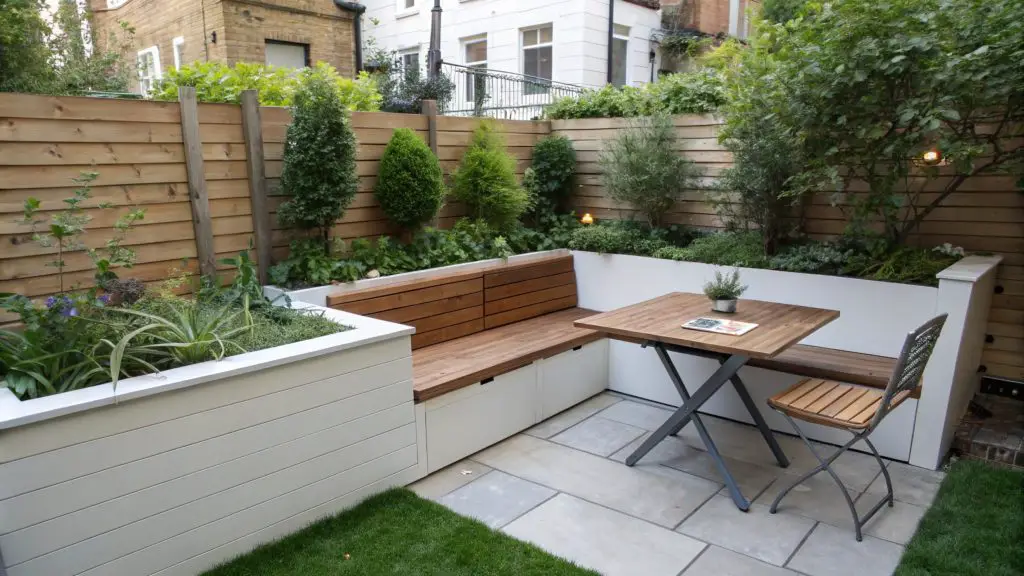
Selecting the right furniture can make a significant difference in how spacious and functional your garden feels.
Multi-Purpose Pieces
Opt for furniture that serves more than one function. Benches with hidden storage compartments keep essentials out of sight. Tables with foldable leaves can expand when needed and tuck away when not in use.
Built-In Fixtures
Consider integrating seating or planters into existing structures. A built-in bench along a wall or a planter that doubles as a side table maximizes space while adding custom charm.
Choosing Appropriate Materials
Lightweight, streamlined furniture made from materials like aluminum or teak can make the area feel less cramped compared to bulkier pieces.
Creating the Illusion of Space
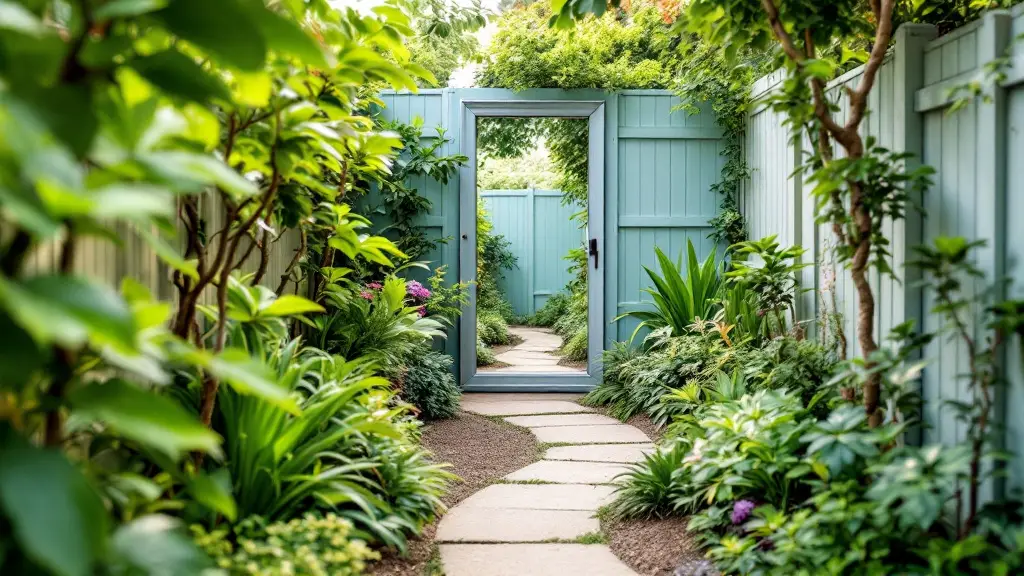
Through clever design tricks, a small garden can feel more expansive than its physical dimensions suggest.
Strategic Use of Mirrors
Mirrors reflect light and scenery, amplifying the sense of space. Position them to reflect attractive features of the garden, but ensure they are placed safely to avoid disorienting reflections or posing risks to wildlife.
Light Color Schemes
Pale hues for walls, fences, and larger surfaces can make boundaries recede visually. Soft blues, greens, and neutrals enhance natural light and contribute to an airy atmosphere.
Perspective and Pathways
Design pathways that lead the eye outward. A winding path or one that narrows towards the end can create a sense of depth. Similarly, arranging plants from shorter in the front to taller in the back amplifies the perception of distance.
Mirrors Suitable for Gardens

Rustic Wood Mirror
Add rustic charm to your space with our Farmhouse Style Mirror. 9.5×12″ wooden frame with a whitewashed finish creates a retro feel. Sturdy, high-quality construction & high-definition glass for a clear reflection. Perfect for farmhouse decor & beyond.

Arched Decorative Mirror
Reimagine your space with our Arched Paneled Mirror. Premium materials & fine craftsmanship ensure long-lasting quality. Reflects light, creating a brighter & more spacious feel. Perfect for garden walls, vanities, or any room in your home.

Rectangular Rustic Antique Mirror
Elevate your space with our Vintage Style Mirror. 11×9.4″ gold frame adds a touch of elegance to any room. Perfect for bathrooms, bedrooms, entryways or even outside in the garden. Multifunctional & wall mountable. Makes a beautiful and functional addition.
Amazon
Innovative Planting Techniques
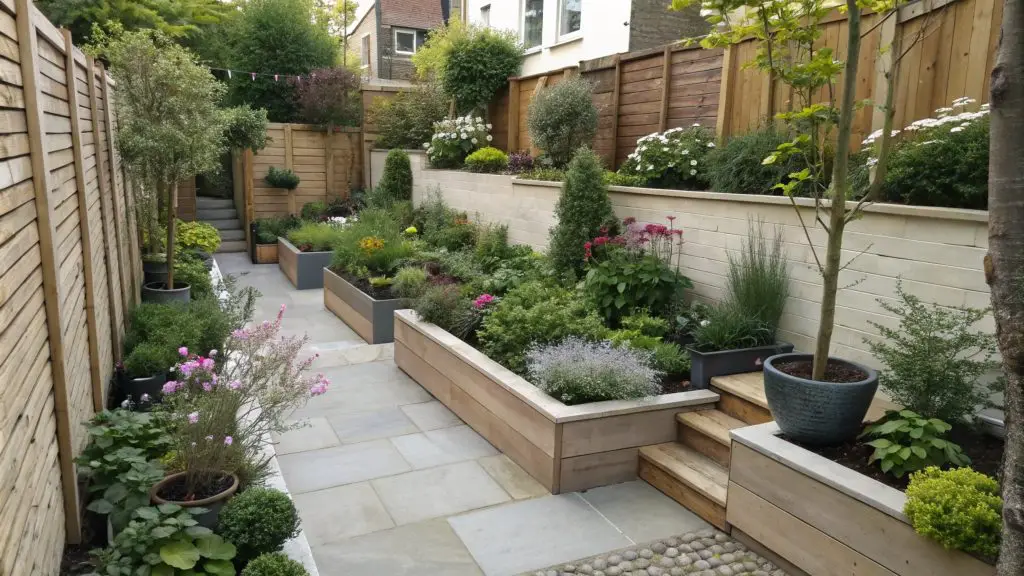
Thoughtful plant selection and arrangement can turn a small garden into a lush sanctuary.
Layered Planting
By combining plants of varying heights and textures, you create layers that add complexity and interest. Groundcovers, perennials, shrubs, and small trees can coexist harmoniously when carefully planned.
Container Gardening
Containers offer flexibility and control. They can be moved to capture sunlight, create new focal points, or accommodate seasonal changes. Stylish pots also serve as decorative elements in their own right.
Raised Beds
Elevating planting areas adds dimension and makes gardening more accessible. Raised beds can define different zones within the garden and provide better soil conditions for plants.
Optimizing Surfaces and Flooring
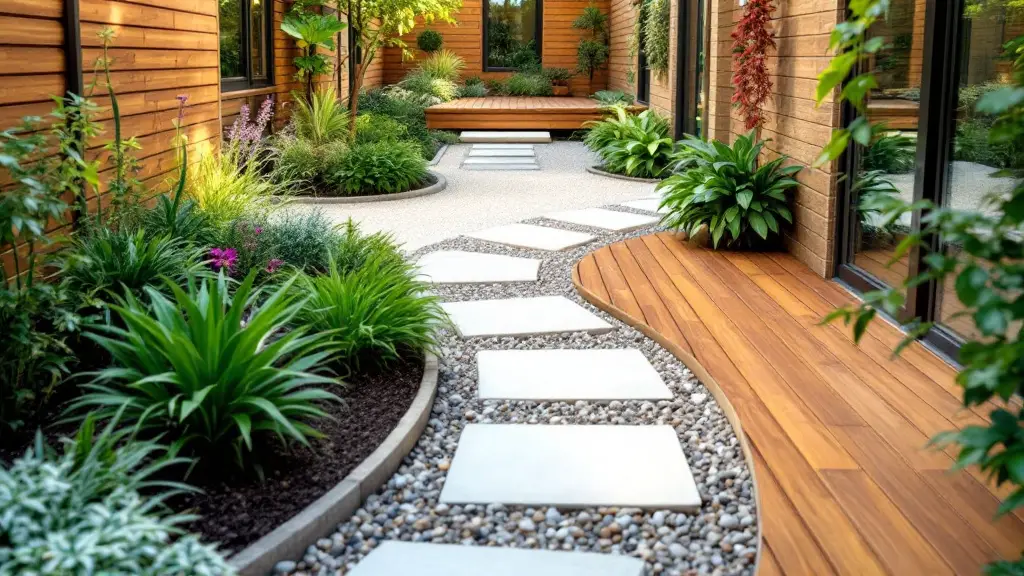
The ground beneath your feet plays a crucial role in the garden’s overall feel.
Creative Pathways
Instead of straight lines, consider diagonal or curved pathways to break the linear monotony. Materials like gravel, stone slabs, or decking laid in interesting patterns can enhance the visual appeal.
Varied Textures
Incorporate different textures to delineate areas. A combination of smooth decking, crunchy gravel, and soft groundcovers underfoot can make the garden feel more expansive.
Reflective Materials
Surfaces that reflect light, such as glazed tiles or metallic accents, can brighten shady areas and contribute to the illusion of space.
Illuminating the Space

Thoughtful lighting extends the garden’s usability and enhances its ambiance after dusk.
Layered Lighting Approach
Combine ambient lighting for general illumination, task lighting for specific activities like grilling or reading, and accent lighting to highlight features like plants or artwork.
Solar and LED Options
Energy-efficient lighting solutions reduce the need for extensive wiring. Solar-powered lights charge during the day and cast a gentle glow at night, while LED strips can outline pathways or seating areas.
Creating Focal Points
Use lighting to draw attention to key elements, such as a specimen tree, water feature, or architectural detail, adding depth and drama to the garden at night.
Introducing Water Elements
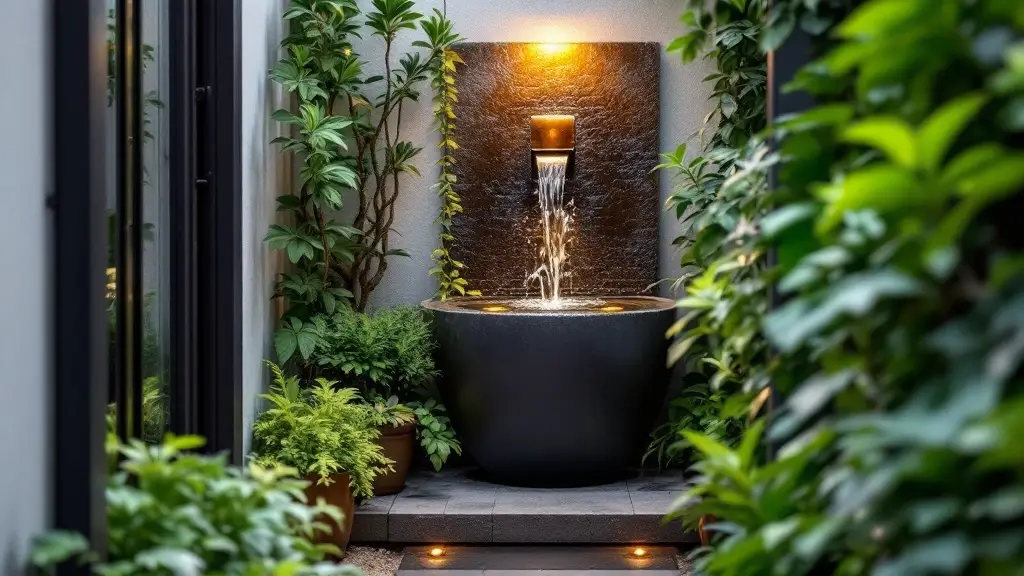
Water features add a sensory dimension that enhances the garden’s atmosphere.
Space-Saving Designs
Wall-mounted fountains or narrow water channels can introduce the soothing sound of water without occupying significant space. These features can become focal points that draw the eye and anchor the design.
Benefits of Water
Beyond aesthetics, water elements can cool the surrounding air, attract birds and beneficial insects, and provide a calming auditory backdrop.
Practical Considerations
Ensure that water features are appropriately scaled for the garden and consider maintenance needs, such as keeping the water clean and preventing algae growth.
Maintenance: Keeping It Pristine
A well-maintained garden, no matter how small, exudes beauty and tranquility.
Regular Upkeep
Consistent pruning, weeding, and cleaning prevent the space from becoming overgrown or cluttered. Deadheading flowers encourages new blooms, and removing spent foliage keeps plants healthy.
Seasonal Refreshes
Update plantings and decor with the changing seasons. Swap out annuals, rotate container arrangements, and introduce seasonal accents like lanterns or cushions to keep the garden feeling fresh.
Sustainable Practices
Implement eco-friendly gardening methods, such as composting, using organic fertilizers, and collecting rainwater. Native plants often require less maintenance and support local ecosystems.
Real-Life Inspirations
Stories of transformed small gardens offer valuable insights and motivation. Below are several ideas for how to re-envisage your available space.
The Urban Oasis
In a compact New York City backyard, a designer used vertical planting, mirrored surfaces, and minimalist furniture to create a serene escape from the city’s hustle. The clever use of bamboo and grasses added privacy without sacrificing space.
The Narrow Courtyard
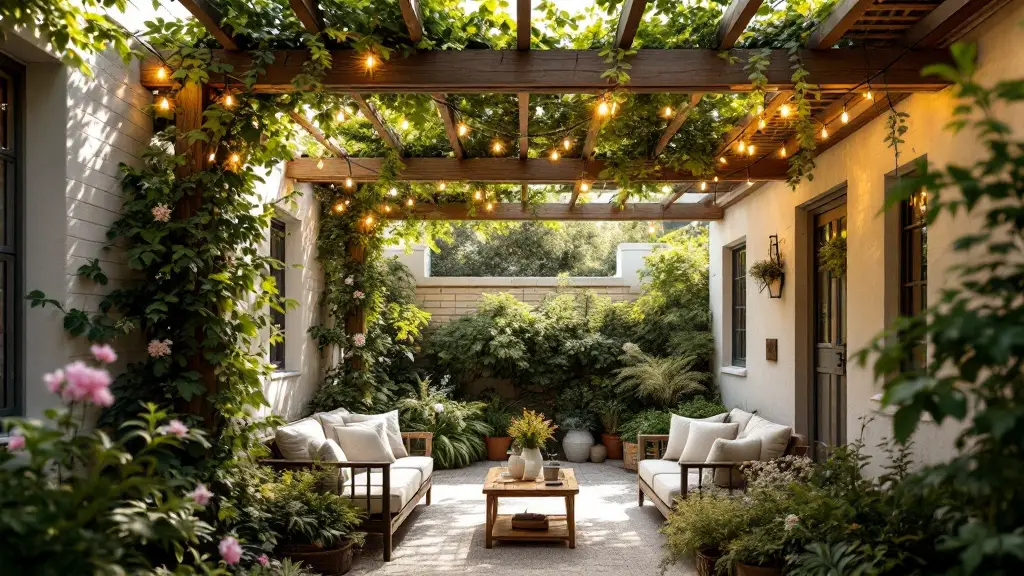
A London homeowner turned a narrow side yard into a vibrant kitchen garden. Raised beds along the walls housed herbs and vegetables, while a narrow table provided space for alfresco dining. Trellises supported climbing beans and tomatoes, making use of every inch.
The Balcony Garden
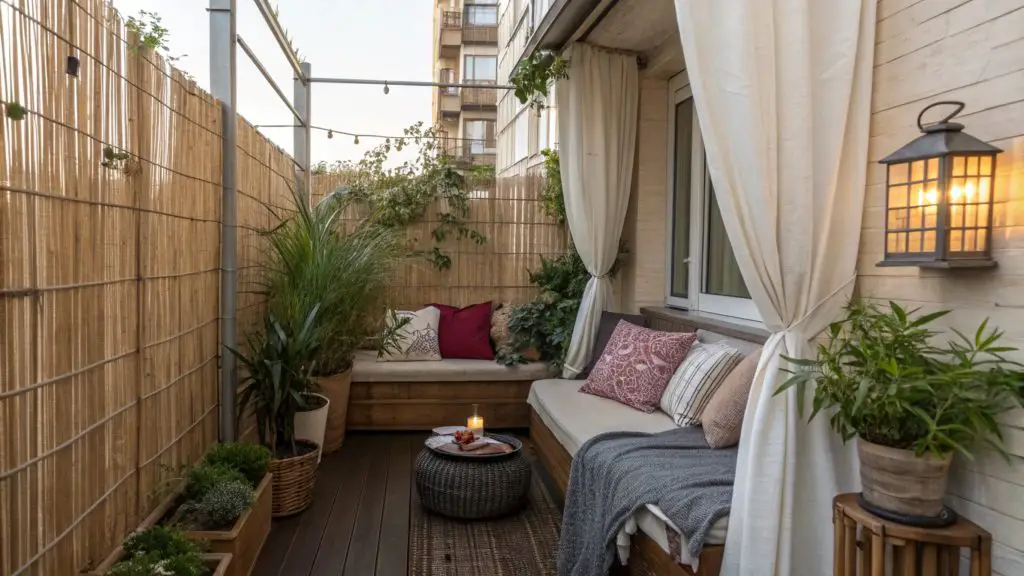
Even without traditional ground space, a Parisian apartment balcony became a lush retreat. Hanging planters, wall-mounted pots, and a small water feature transformed the space into a green haven high above the street.
These are just some of the ways that you can overcome difficult small and narrow outdoor spaces. There are of course many ideas for compact narrow backyards that you and create a small personal paradise.
Last Thoughts
Transforming a small narrow garden into a captivating outdoor space is a rewarding endeavor that blends creativity with practicality. By embracing the unique characteristics of these gardens and employing strategic design principles, it’s possible to craft an environment that feels both intimate and expansive.
Every decision, from plant selection to furniture placement, contributes to the garden’s overall harmony. The constraints of space become catalysts for innovation, encouraging solutions that might be overlooked in larger areas.
In the end, the true beauty of a garden lies not in its size but in the experience it offers. A well-designed small garden can provide solace, joy, and a connection to nature that enriches daily life. It’s a testament to the idea that with thoughtful planning and a touch of imagination, even the most modest spaces can bloom into something extraordinary.
